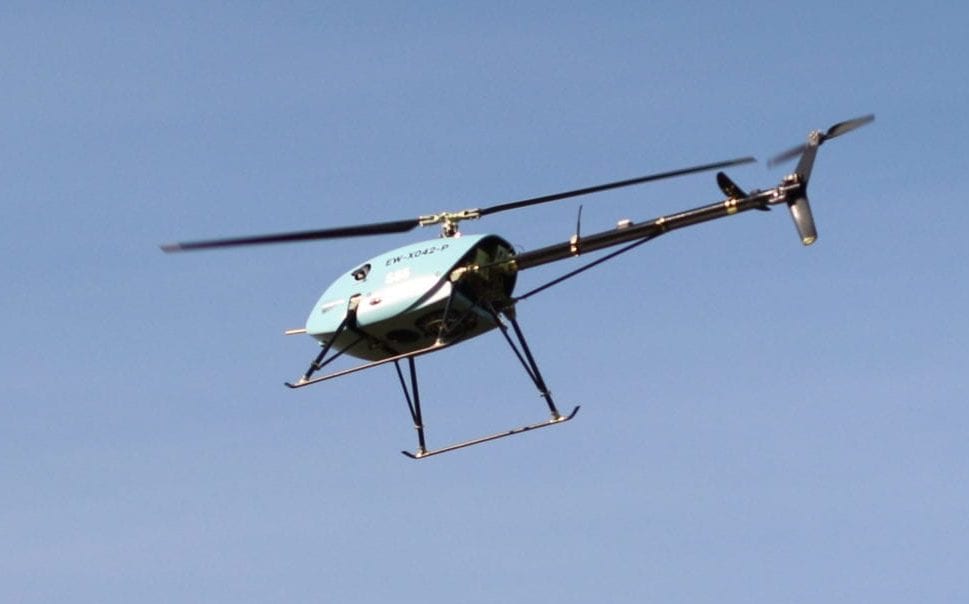
Unmanned flight controlled by UAVOS’ “GLIDER” algorithm. (UAVOS)
Drone research company UAVOS last week tested a new flight algorithm for unmanned vertical takeoff and landing aircraft that could allow the aircraft to safely land in case of engine failure.
Called GLIDER, the new algorithm controls autorotation as part of the company’s wider autopilot module. The new flight mode can automatically switch the helicopter to autorotate mode in the case of engine failure, which improves safety and survivability. It also protects the power unit from overloads in critical flight conditions, according to UAVOS.
“Extremely adverse meteorological conditions and flying at the limit of capacity at high altitudes cause the risk of engine failure during the mission,” said Aliaksei Stratsilatau, UAVOS lead developer and board chairman, in a statement. “The new flight algorithm GLIDER gives the UAV/automatic control system operator additional time to launch an emergency parachute or select an emergency landing site.”
“In addition, the helicopter can be diverted from habitable areas or man-made objects,” he added. “This is especially true, for example, during missions over power lines, oil refineries, oil storages and so on. The algorithm developed by UAVOS allows [users] to fly without a significant power reserve, which affects the duration of the mission and the amount of additional onboard fuel.”
UAVOS’ current efforts in the unmanned space include high-altitude, solar-powered gliders and the conversion of aircraft for unmanned use.